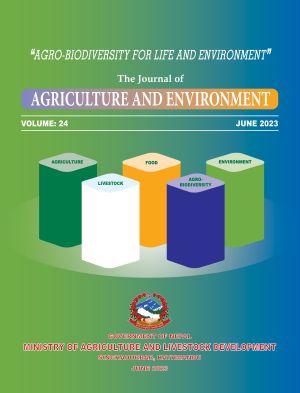Analysis of Supply Chain and Fish Marketing in Nawalparasi (East), Nepal
DOI:
https://doi.org/10.3126/aej.v24i01.57889Keywords:
Consumer, improving efficiency, marketing margins, post-harvest management, producers, traders, substituteAbstract
Study was conducted during October 2021 to November 2021, to investigate the supply chain, present market situation, marketing constrains, marketing margins, and the consumer’s behavior and purchasing pattern towards the fish in Nawalparasi (East) district of Nepal. Fish producers, traders and consumers were surveyed through semi-structure questionnaire. Five fish Producers, eight wholesalers, twelve retailers and twenty consumers were randomly surveyed. Among 20 traders majority of the traders belonging to the Madhesi and Tharu community. Finding of the study revealed that fish trading almost dominated by male (84%). All the respondents involved in fish trading more than 30 years old. there was no specific marketing channel used by the farmers, 55.65% of total fish produce is sold to the wholesalers, 32.49% to the retailers and 11.86% is sold to the customers directly by the fish farmers. The marketing margin of Nepalese live fish Rohu and Common Carp was higher than other species of fish in the Nawalparasi (East). Nepali fish Rohu and common carp fetch highest price Rs 425/kg and Pangasius fetch lowest price Rs. 280/kg. Nepalese fish were mostly packed in plastic crates and transported by pick up van. Indian average fish sizes were 2.91 kg and Nepali average fish sizes were 1.91 kg. Among the major carp species; the most preferred one by the consumers was Rohu followed by Bhakur.




